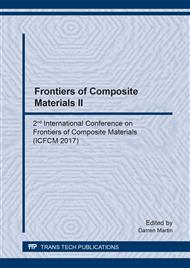p.110
p.115
p.120
p.125
p.130
p.135
p.143
p.149
p.156
Simulation and Experiment on Extrusion Molding of Five-Lumen Medical Catheter
Abstract:
We choose the optimal cross-sectional shape of the polymer five-lumen catheter products as the goal, and the simulation and experiment of extrusion process parameters were carried out. Firstly, the effect of gas injection pressure and extrusion rate on the extrusion expansion ratio, and the influence of gas injection pressure, extrusion rate and traction speed on the cross-section size, was studied by using Polyflow software; The effects of gas injection pressure, extrusion rate and traction velocity on the five-lumen catheter were studied, the experimental results are compared with the numerical simulation results. The optimal combination of the parameters of the extruded five-lumen catheter is obtained by orthogonal experiment, I.e., the head temperature T = 210 °C, injection pressure P = 4515Pa, the extrusion rate v = 4.5mm / s, pulling speed vp = 33.83mm / s; The corresponding relative error is: Primary lumen relative error Y1 = 3.46%, secondary lumen relative error Y2 = 3.33%, the minimum relative error lumen Y3 = 1%, the outer contour relative error Y0 = 0.61%.
Info:
Periodical:
Pages:
149-155
Citation:
Online since:
May 2018
Authors:
Price:
Сopyright:
© 2018 Trans Tech Publications Ltd. All Rights Reserved
Share:
Citation:


